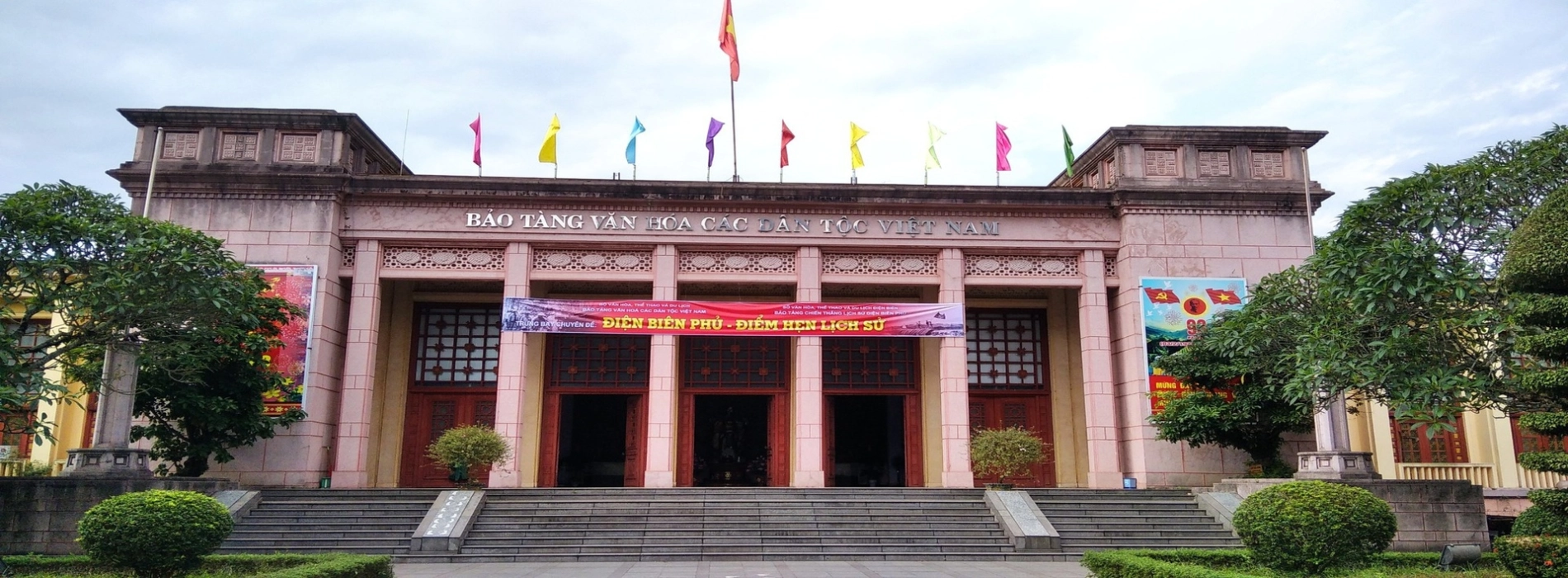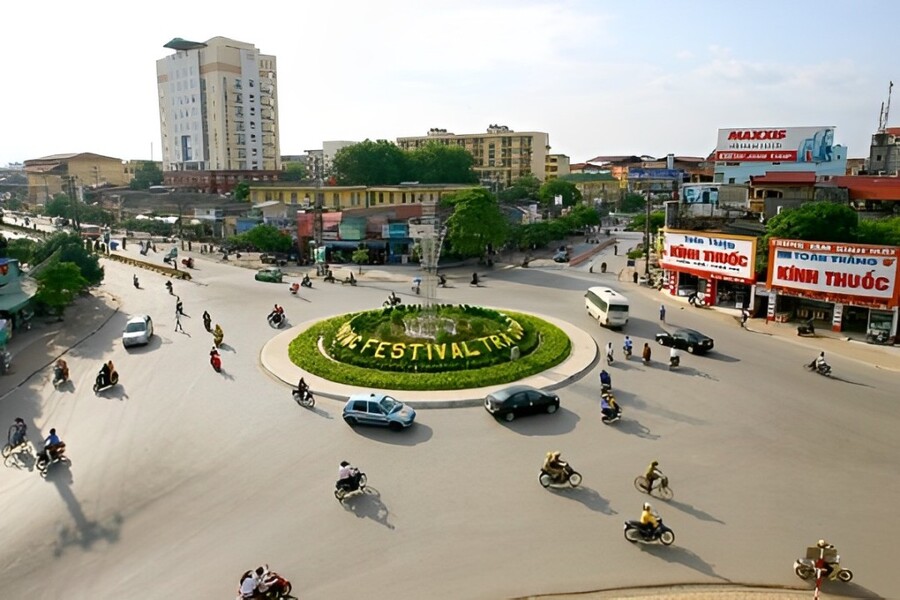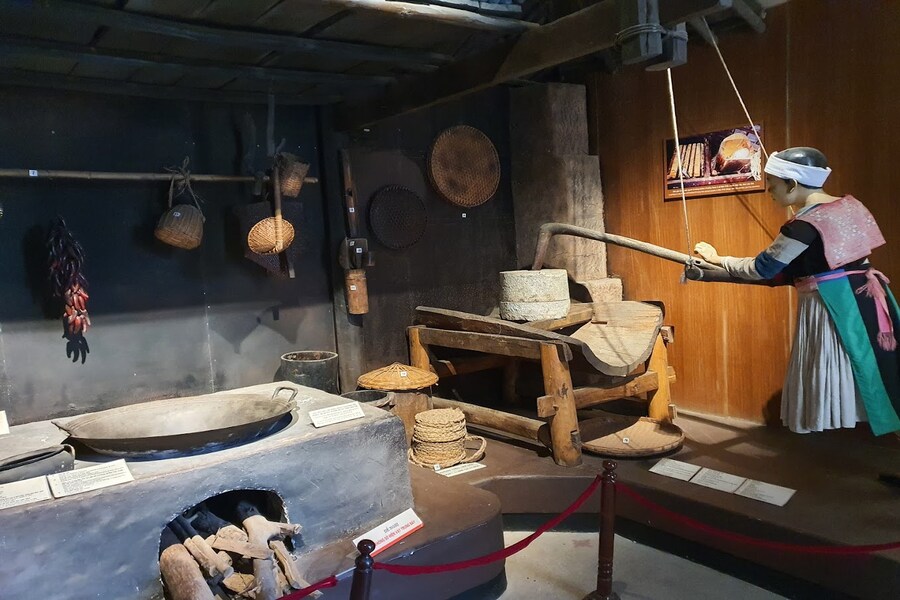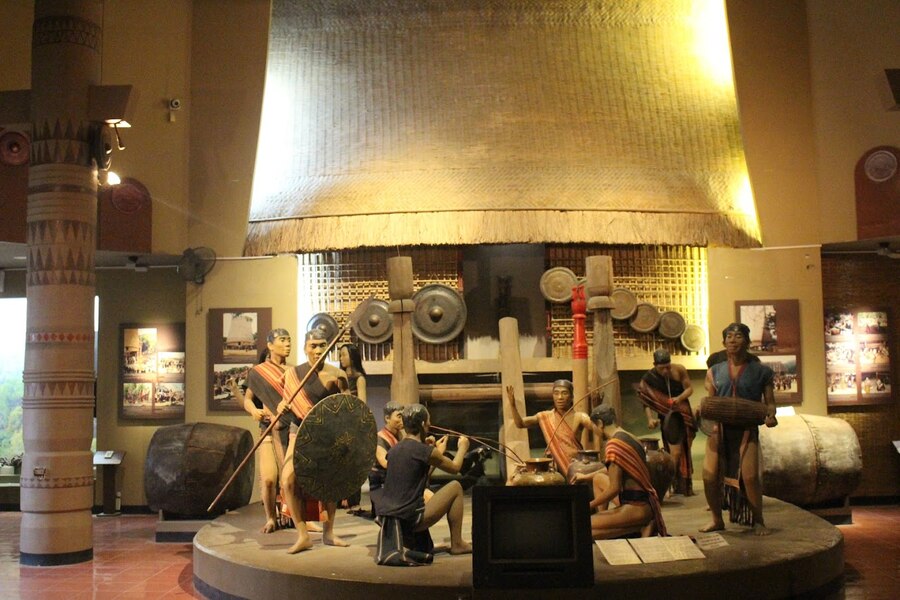Cultures Museum of Vietnam's Ethnic Groups

Cultures Museum of Vietnam's Ethnic Groups is one of the country's seven national museums, preserves over 40,000 artifacts and documents on traditional cultures of Vietnam's 54 brotherhood ethnic groups. Its exhibitions are displayed both indoors and outdoors.

Gong dance performance in outdoor exhibition
Established in 1960 as Viet Bac Museum, Cultures Museum of Vietnam's Ethnic Groups was renamed in 1990. Today, it is a popular tourist attraction for both domestic and international visitors in Thai Nguyen City. Don’t hesitate, let’s hold hands with Asia King Travel to take a tour visiting the museum.
Cultures Museum of Vietnam's Ethnic Groups is at 1 Doi Can Street, Thai Nguyen City, Thai Nguyen Province. The museum is built on an intersection next to the Thai Nguyen fountain. Furthermore, The museum is also close to the romantic Cau River. The city has prioritized a prime and easily accessible location for the museum.
Suggested for you: Vietnam Tours 7 Days
Approximately 80 kilometers from Hanoi, driving is the most convenient way to get to the museum. A motorbike is a popular option for enjoying the freedom to explore independently. The drive will take you 2-3 hours. For time savers, travel by car will shave off an hour.
Depart in Hanoi, head to Nhat Tan Bridge and follow Vo Nguyen Giap Road. Turn right onto Expressway No.9, and after passing Bac Ninh Province, switch to Expressway No.7 at an intersection to reach Thai Nguyen City.

Thai Nguyen fountain at the intersection in front of the museum
Once in the city, turn right onto Quang Trung Street and continue straightforward Hoang Van Thu Street. You will see the museum at the last intersection on this street.
Of course you can visit the museum any time of year. It is open daily except Mondays, from 7:30 AM to 11:30 AM and 1:30 PM to 5:00 PM. Yet for a more enriching experience, consider visiting during major Vietnamese holidays.
Some days can be mentioned as National Day (early September), Reunification Day and Dien Bien Phu Victory Day (late April to early May), or the Day for Cultural Diversity of Vietnam's Ethnic Groups on April 19th. The museum organizes commemorative activities and events during these times providing a more lively look into Vietnamese culture.

Exhibition honoring Vietnam's intangible cultural heritage
Cultures Museum of Vietnam's Ethnic Groups has completed the exhibition area including a ceremonial hall and 5 exhibition rooms. These rooms are organized based on language groups and regional cultures, showcasing the unique identities of 54 ethnic groups and their respective living environments.
Ceremonial Hall introduces the essence of Vietnamese culture. In the center, you can behold a portrait of President Ho Chi Minh embracing three children representing North, Central, and South regions of Vietnam. This statue symbolizes his boundless love for the country's youth and the unity of the Vietnamese people.
Behind the statue, a large wooden relief depicts traditional festivals of various ethnic groups across Vietnam: the flute dance of the Northwest and the lion dance of the Red River Delta. Champa’s Ka Te festival, the buffalo sacrifice ritual of the Central Highlands. At last is the thrilling boat race of the South.

The wooden relief and statue of Uncle Ho embracing three children
The first exhibition room showcases Viet-Muong language group cultures. This largest ethnic group primarily subsists on wet rice cultivation and fishing. Their spiritual life is characterized by ancestor worship, and they possess highly developed traditional crafts.
Hall number 2 presents Tay-Kadai language group cultures. Their daily life around stilt houses. They utilize irrigation systems to cultivate rice in valleys near rivers. Their highly developed blacksmithing and weaving crafts produce intricate products. Notably, they possess a rich spiritual life with folk dances and songs.

Kitchen of an ethnic minority group in the northern Highlands
These communities inhabit the northwestern mountains. Excellent at cultivating terraced fields and swidden agriculture. Local markets vividly display their highland culture, culinary traditions, and distinctive clothing. Their unique patterns are readily apparent in their brocade textiles. And don't miss mesmerizing reed pipe dances.
These diverse ethnic groups are scattered across Vietnam. Their economy primarily relies on cultivating fields at relatively high altitudes using the dibble method. Well-known architecture can not be ignored is Central Highlands communal houses and Khmer pagodas. Mon-Khmer people are also known for basketry crafts and communal festivals.

Central Highlands people drinking wine and playing gongs next to a communal house
Austronesian people live in Central Highlands red basalt and Central Vietnam coastal region. Their culture is characterized by matrilineal traditions. Sinitic groups reside in all three Vietnam regions and their culture shares similarities with the broader Chinese culture.
The museum's highlight is the expansive 40,000-square-meter outdoor exhibition area, organized into six distinct geographical regions. Each cultural region features a dedicated space for festivals, showcasing characteristic landscapes and a traditional house as a focal point to introduce the culture.

Ethnic houses and their daily life displayed outside
Here, visitors can easily observe various familiar tools from the past, such as bamboo rice grinders, rudimentary wooden plows, thatched roofs, and earthen walls. The exhibition area seamlessly connects the cultural spaces of three regions, creating a distinctive cultural landscape.
Cultures Museum of Vietnam's Ethnic Groups has affordable admission prices for all ages. An adult ticket costs VND 30,000. High school and university students pay VND 20,000. The price is even lower for children up to middle school age—just VND 10,000 to enjoy the museum.
Cultures Museum of Vietnam's Ethnic Groups is a shared home for Vietnam's 54 ethnic groups. Visitors not only explore artifacts but also participate in activities for a more engaging experience. Contact Asia King Travel for a great trip to Thai Nguyen!
Suggested for you: Vietnam Northeast Motorbiking 9 Days